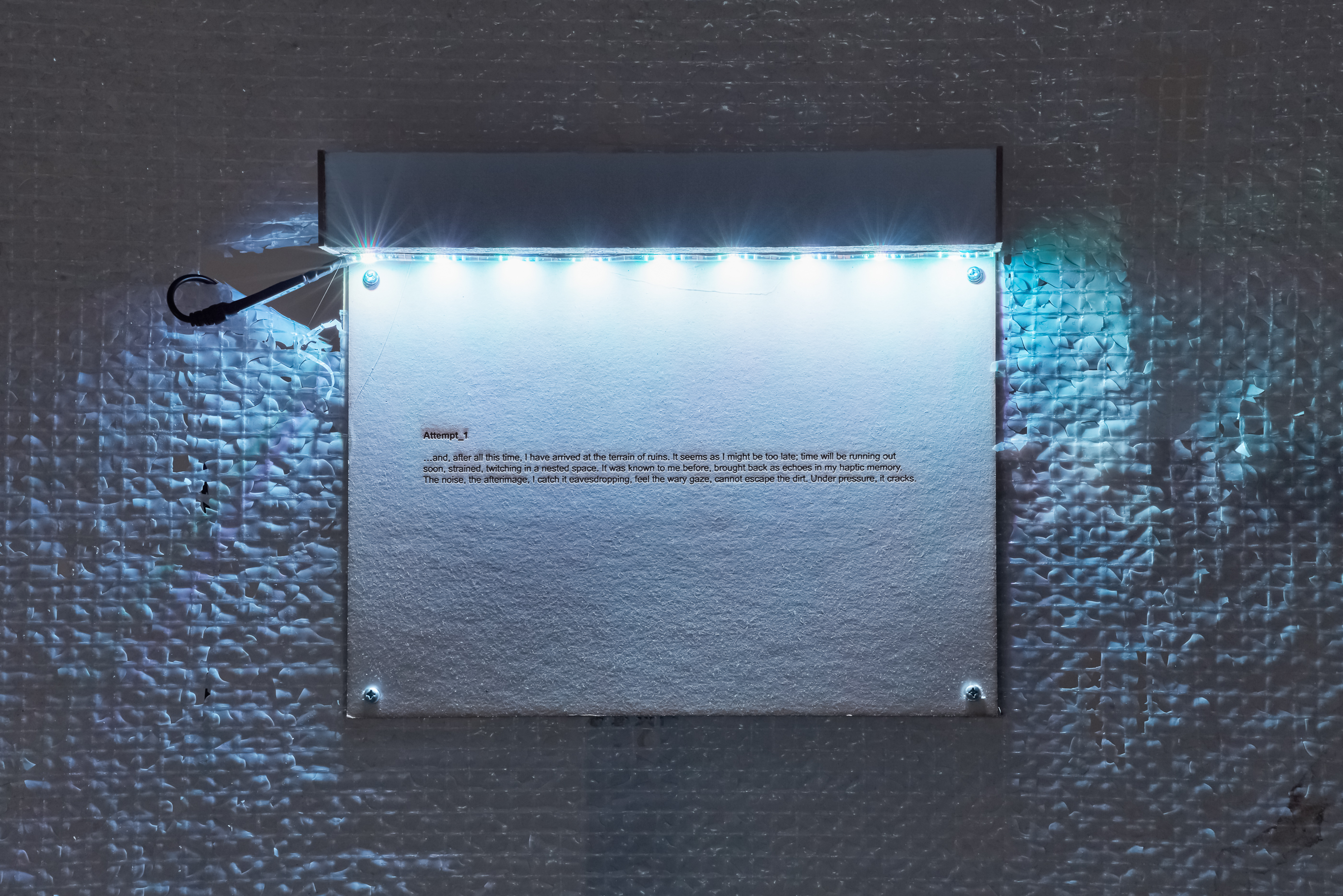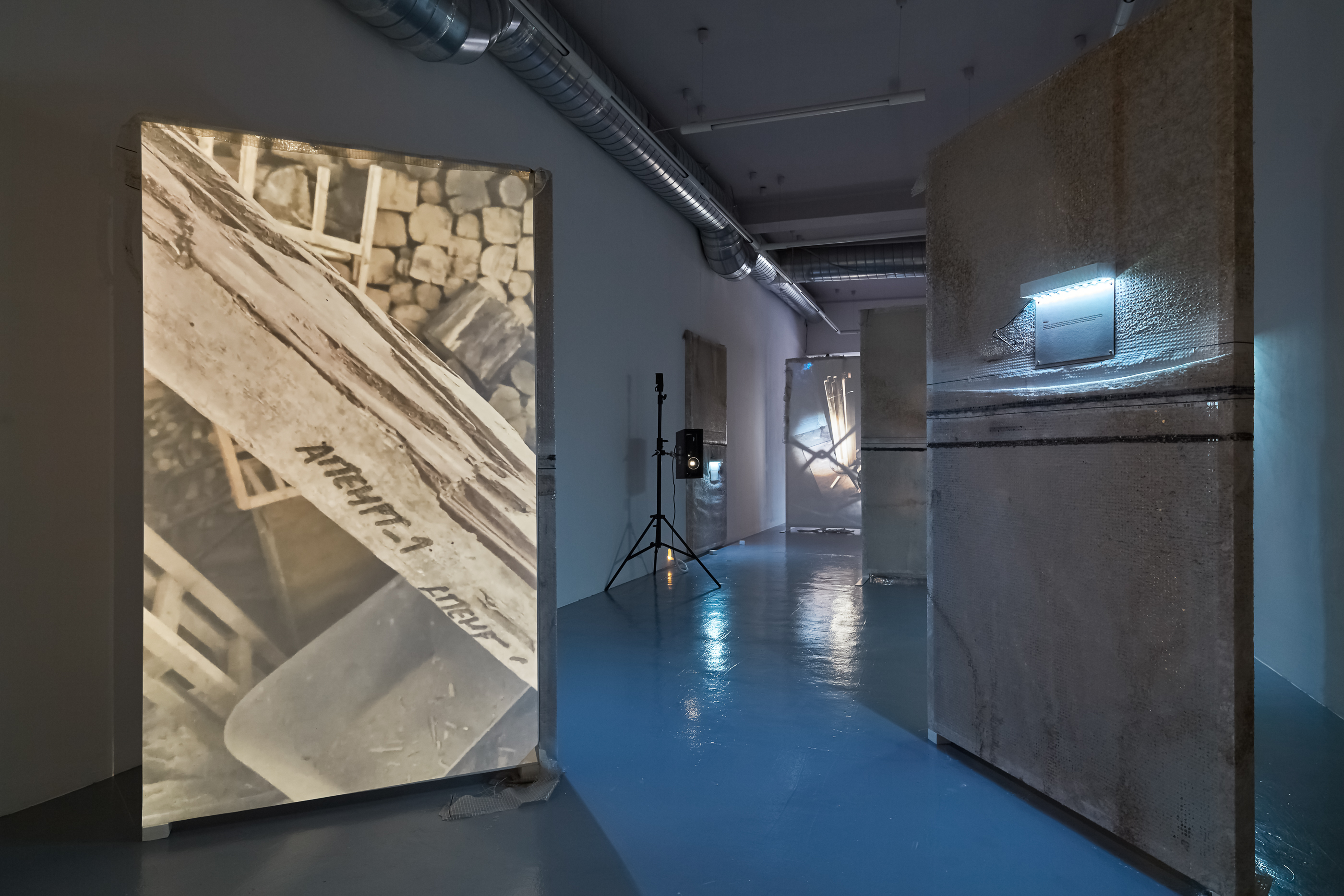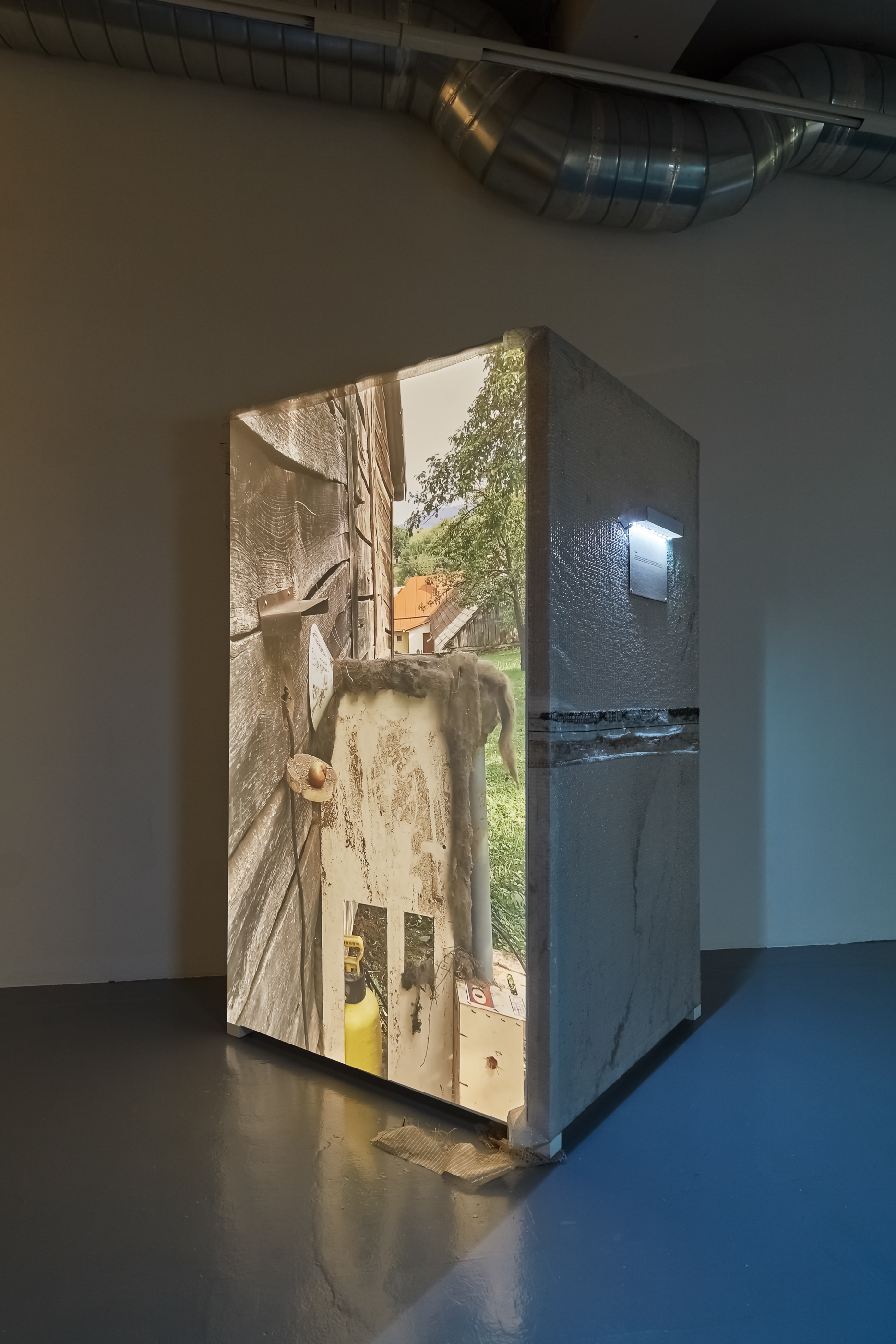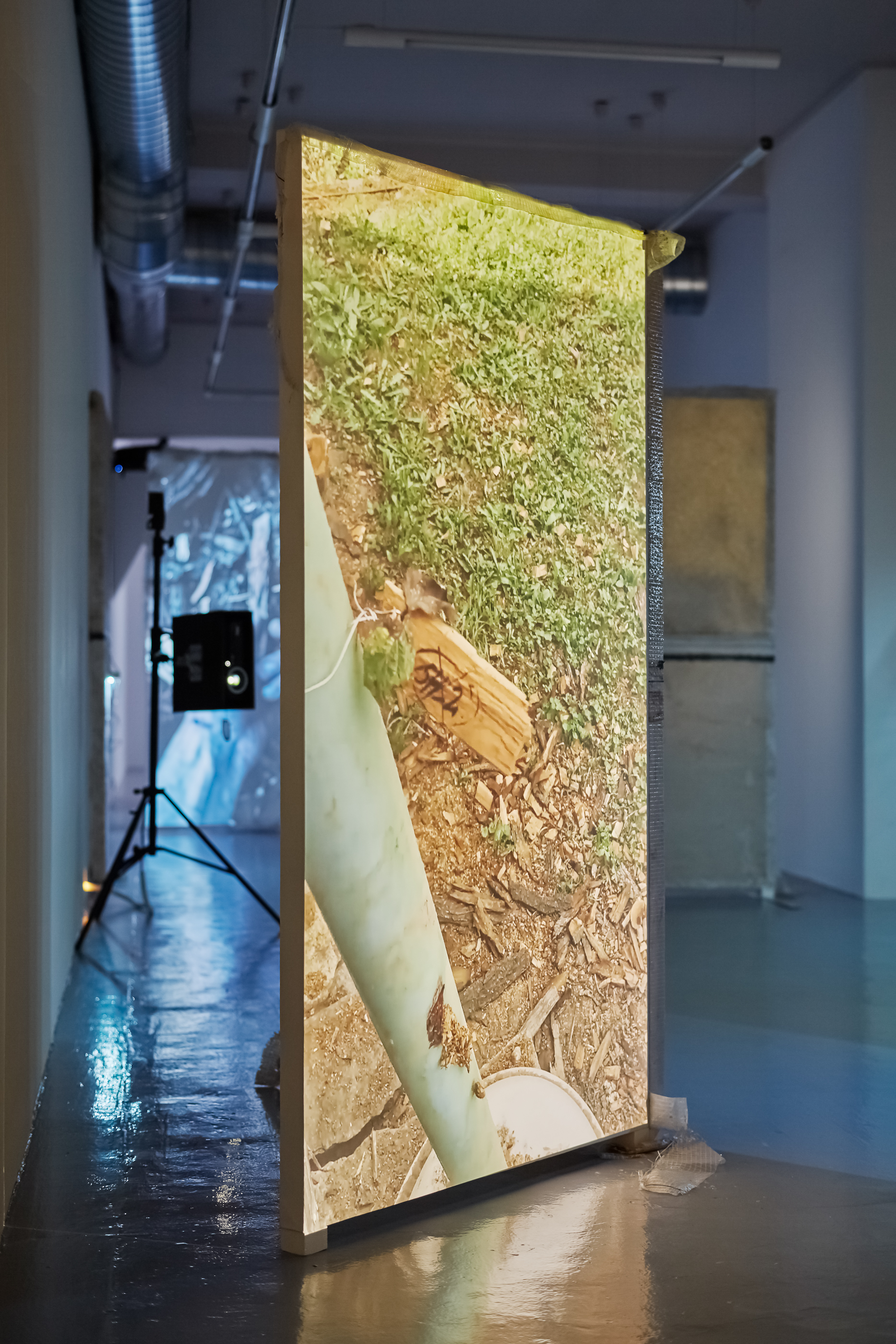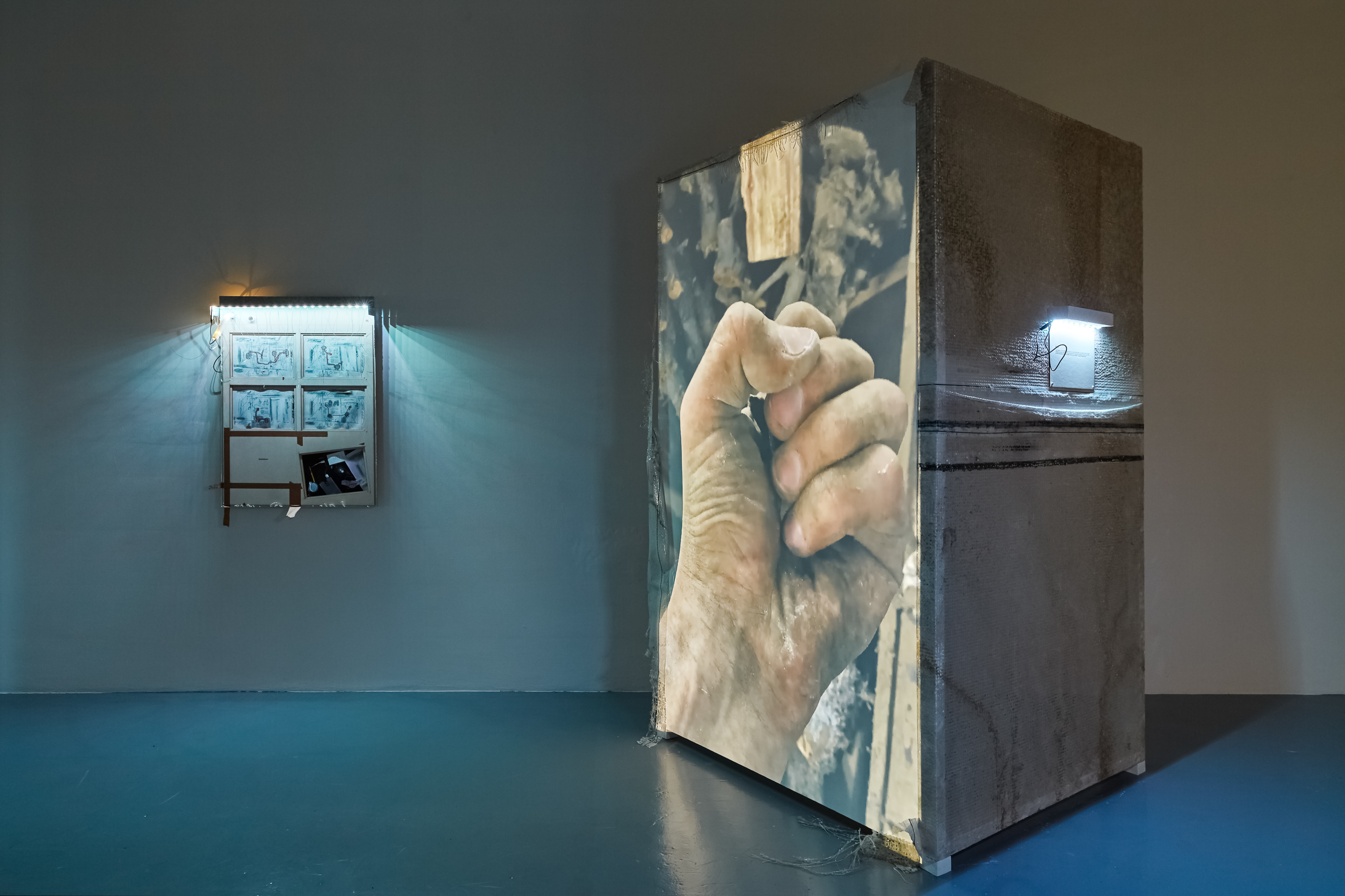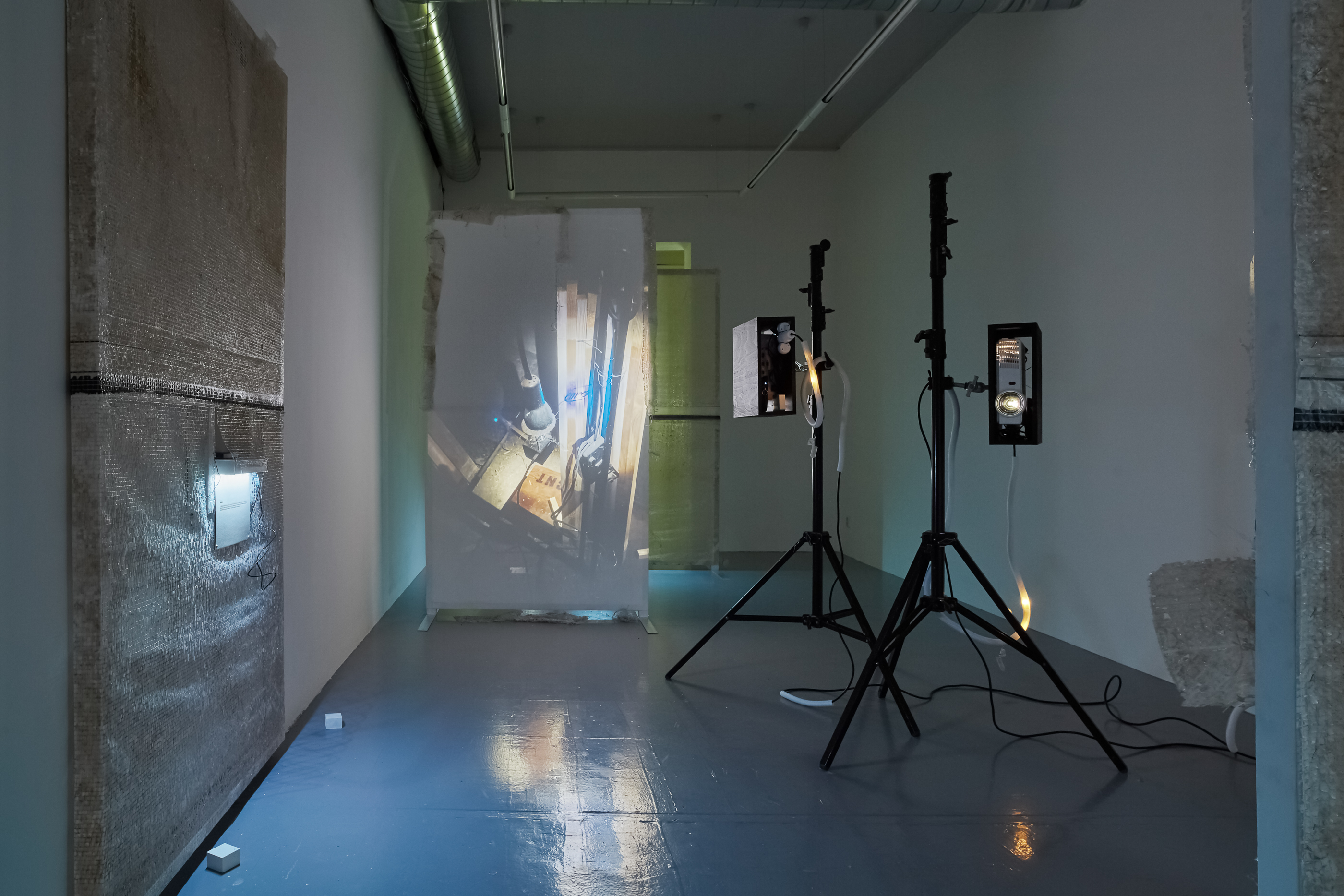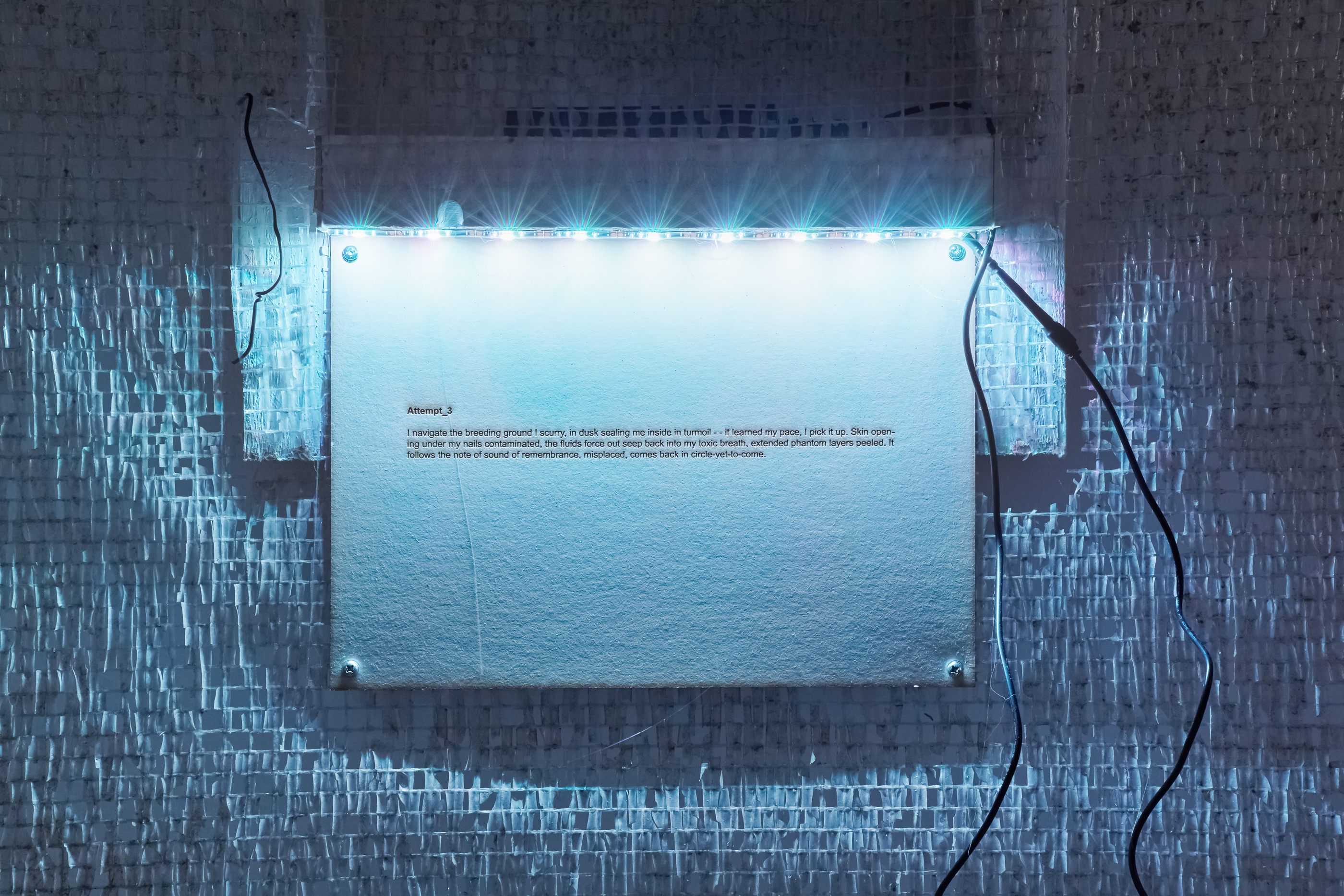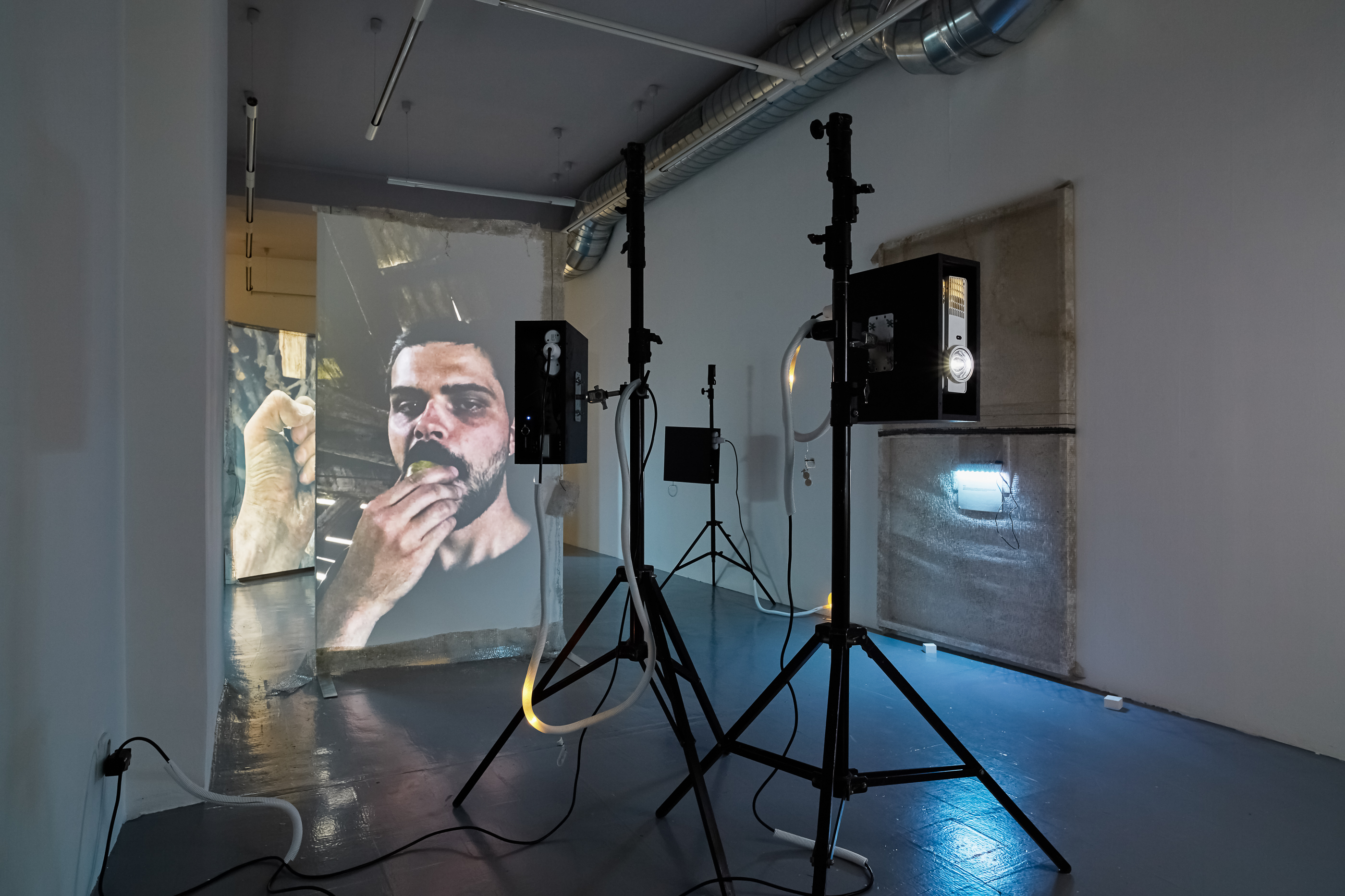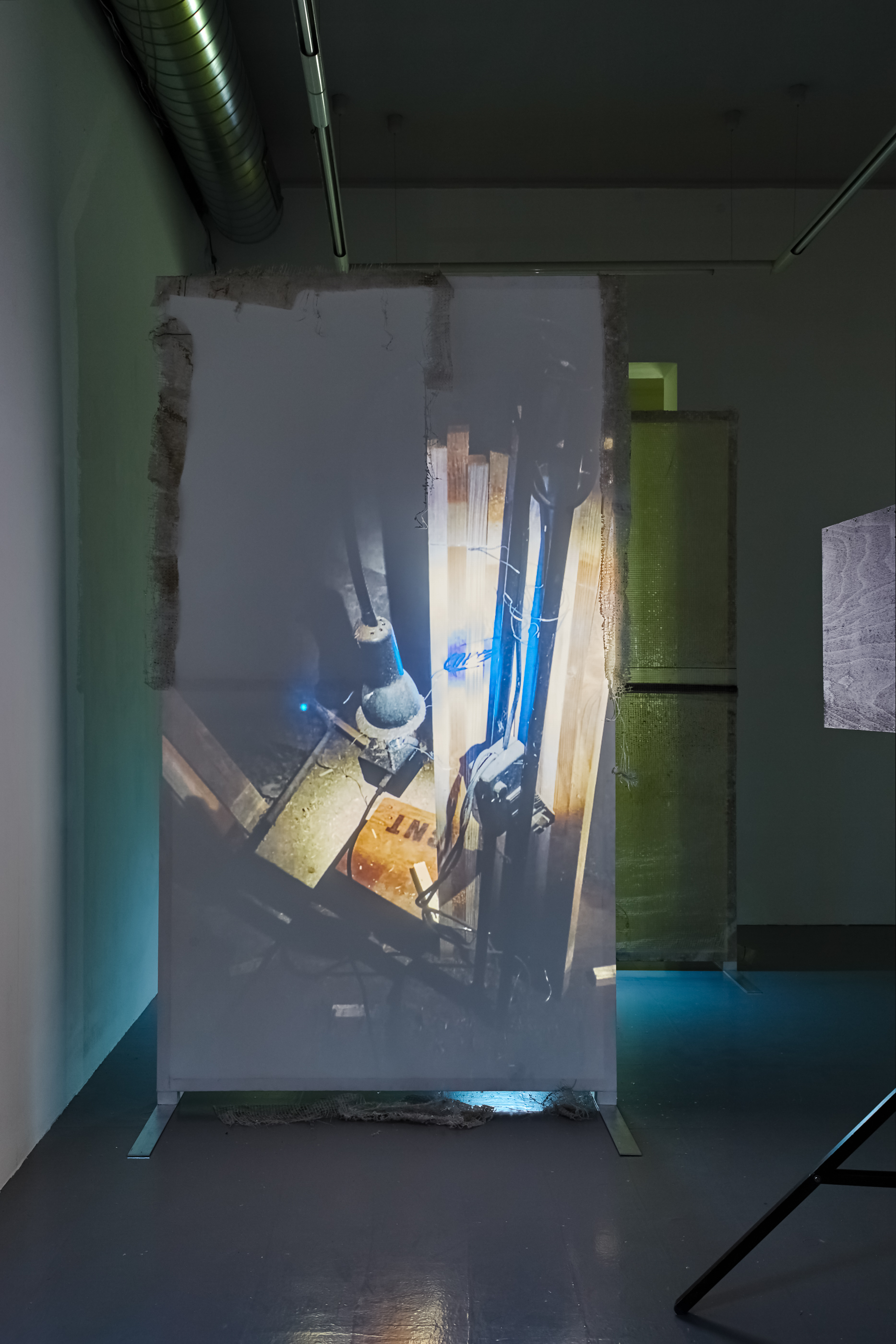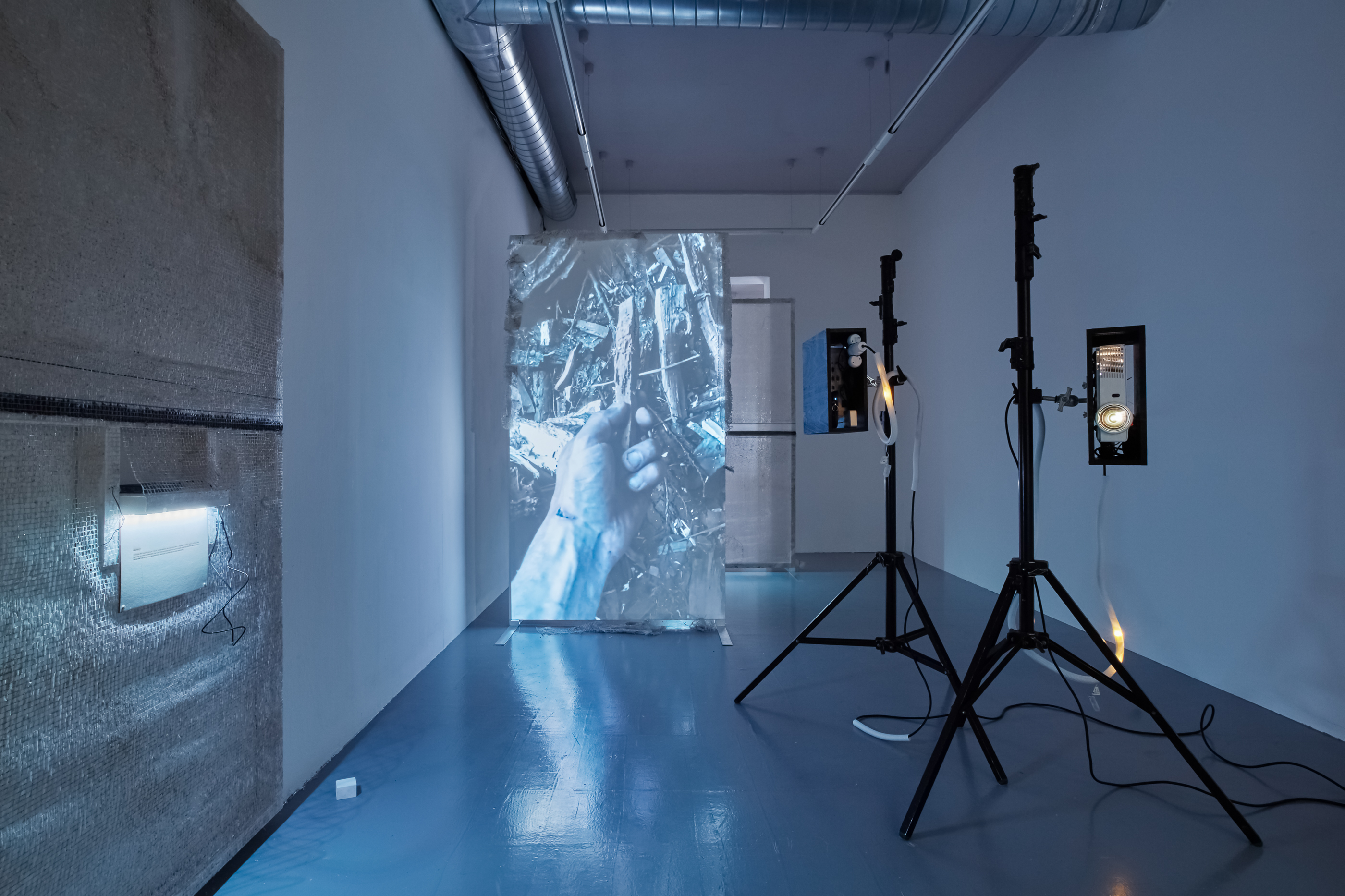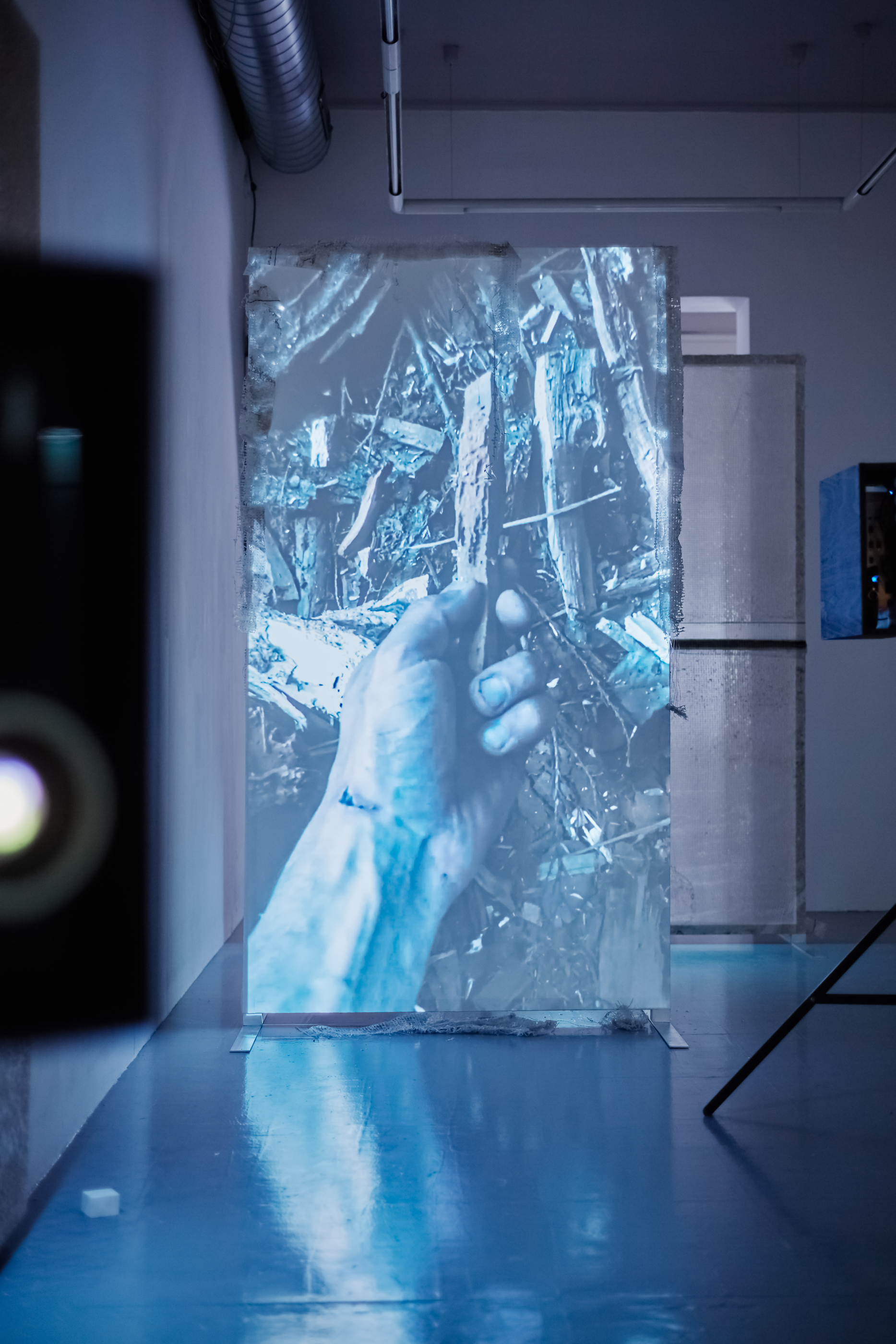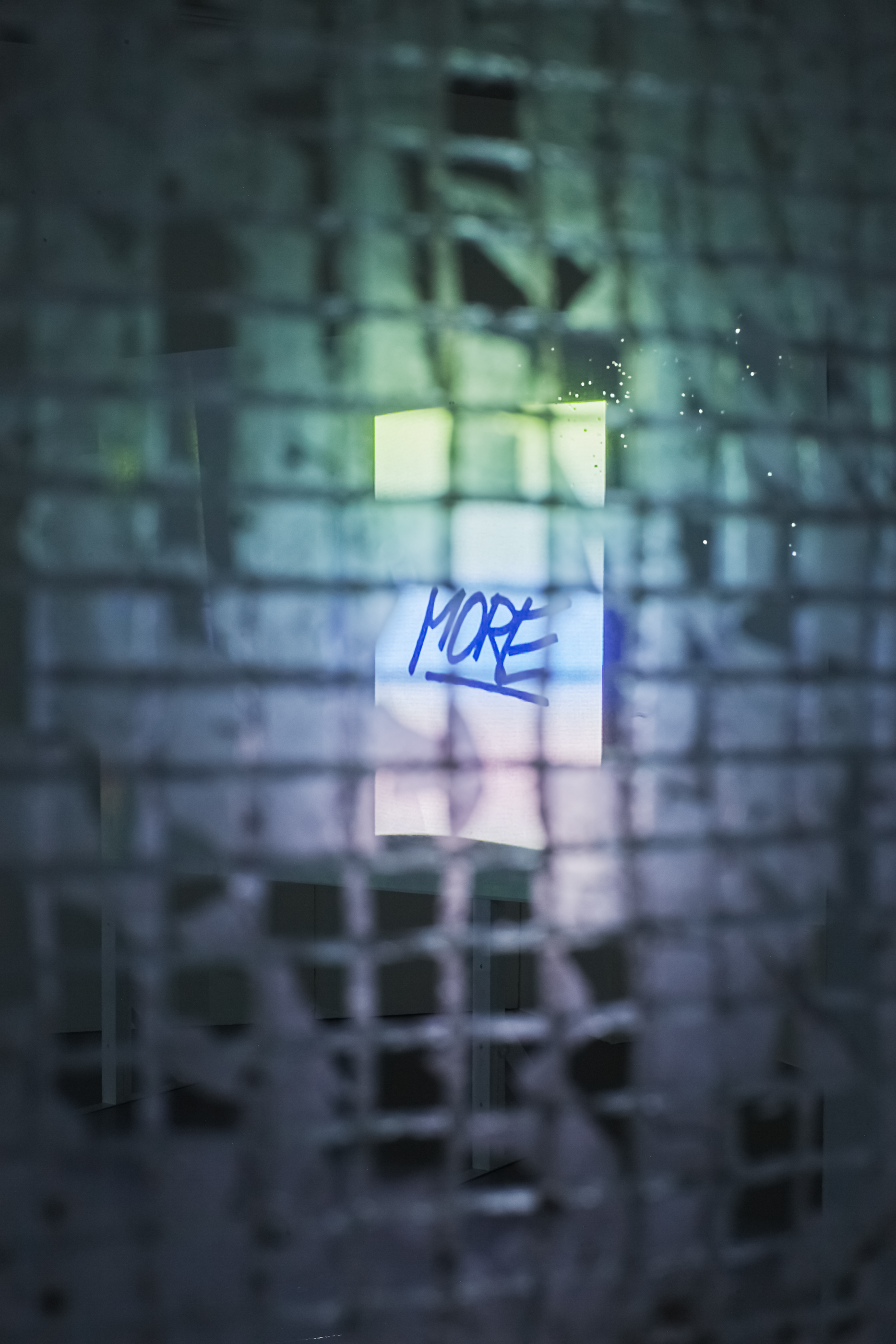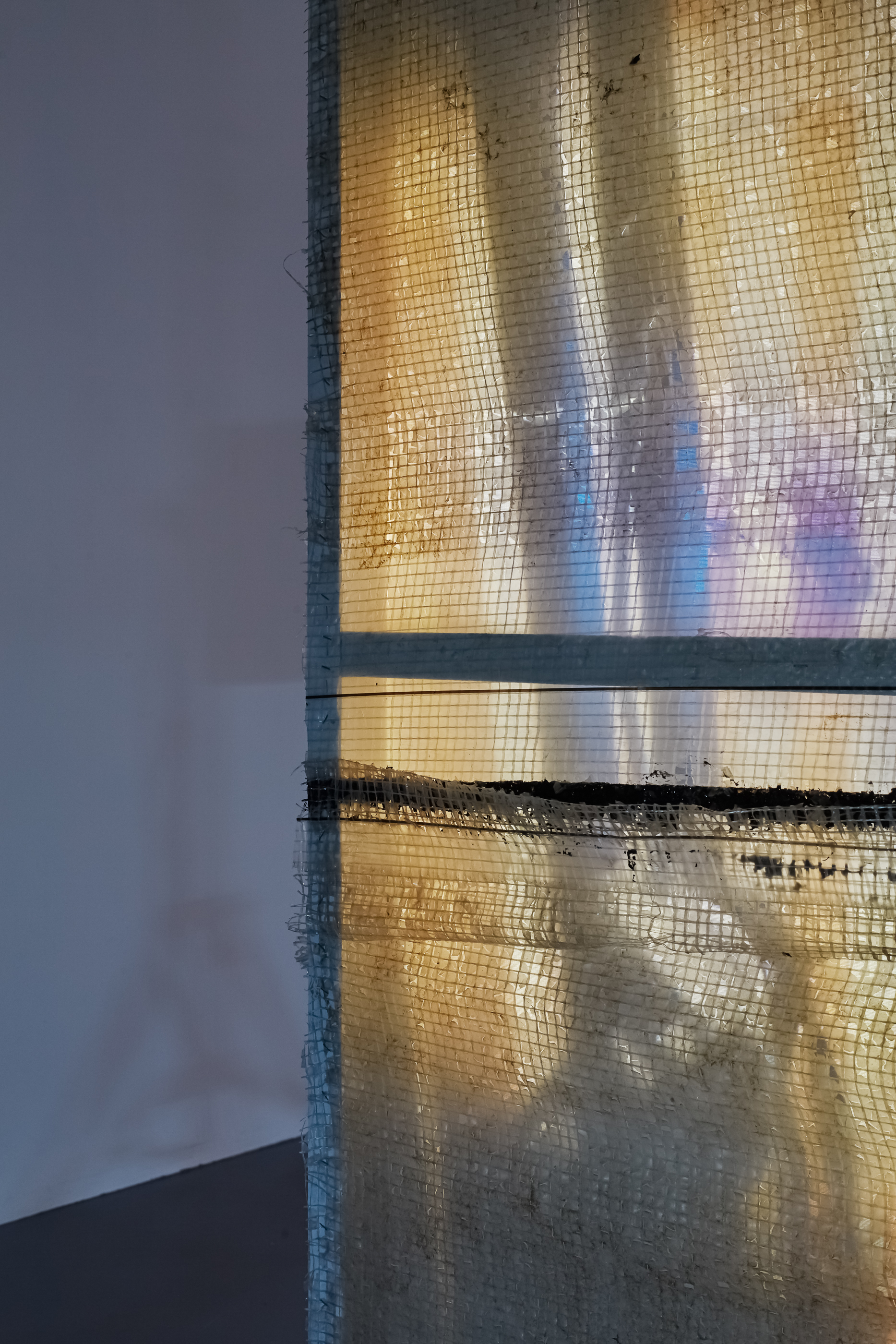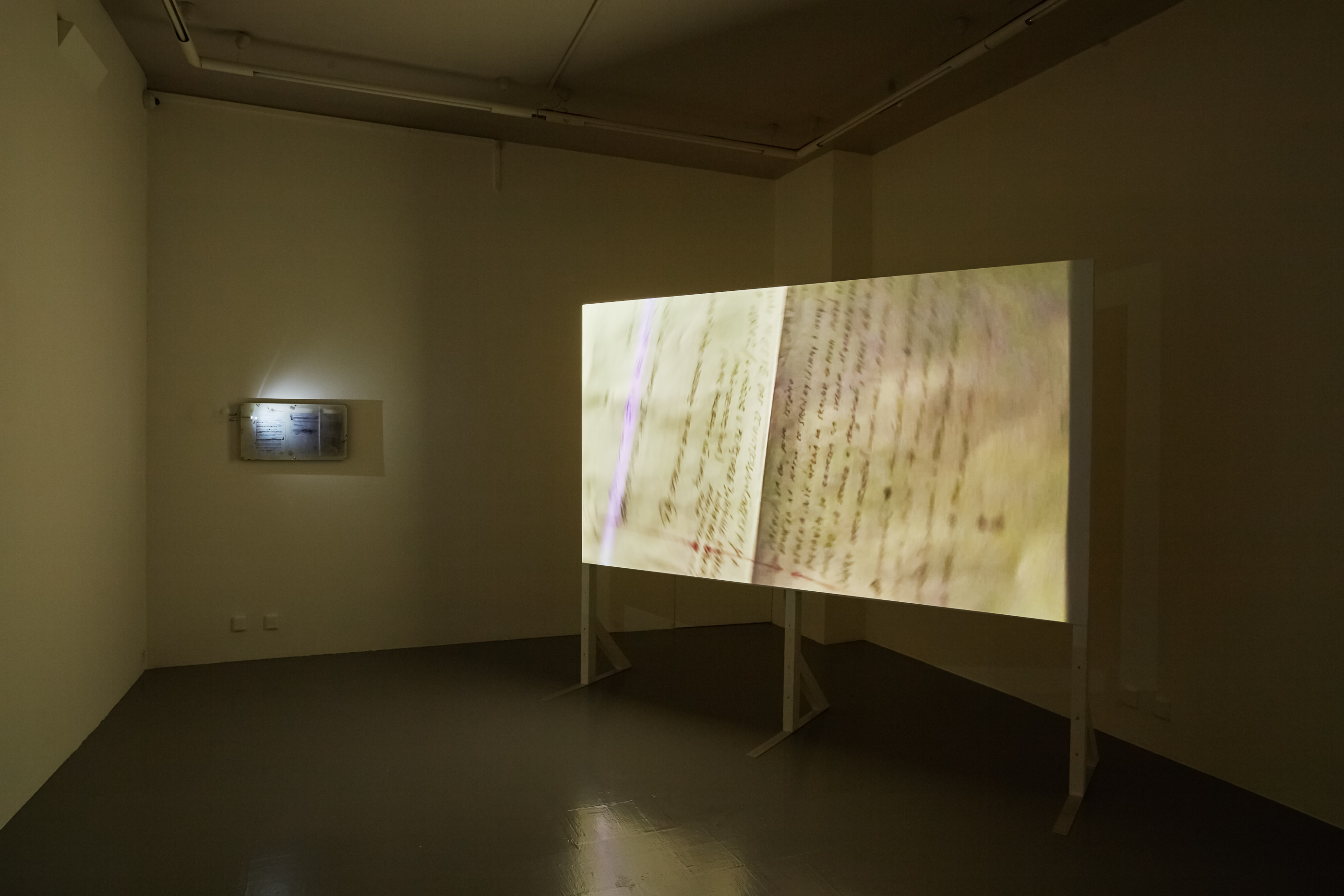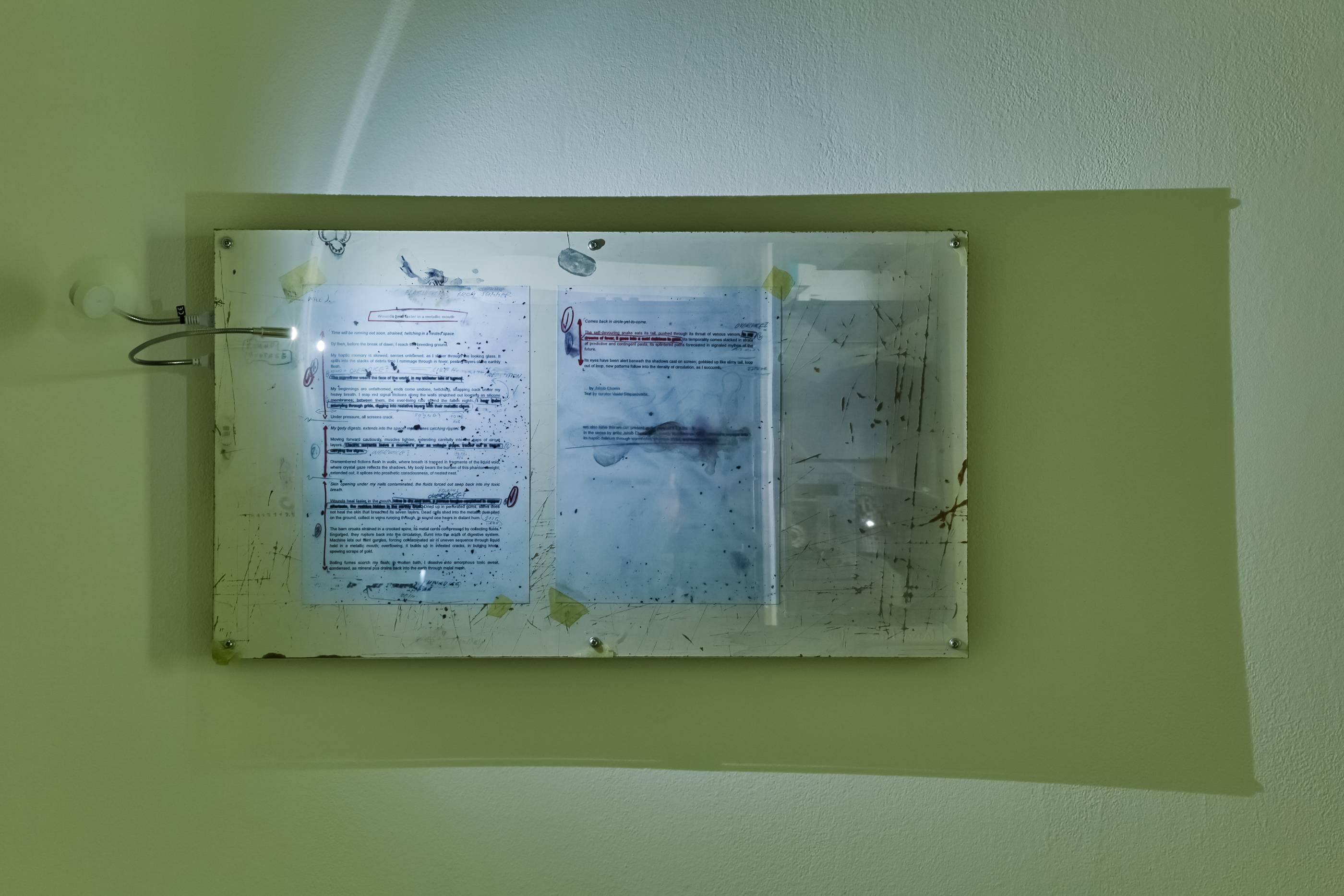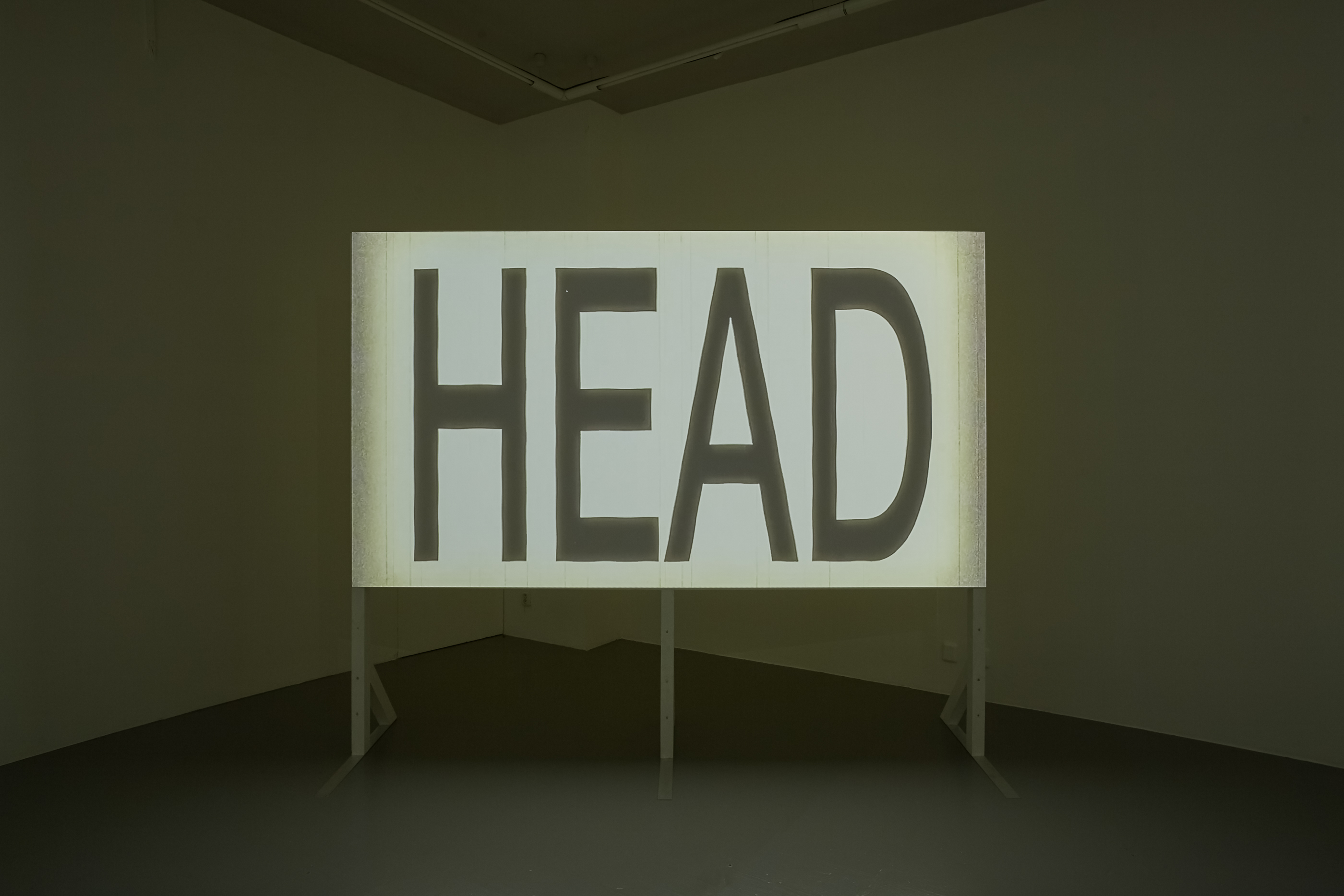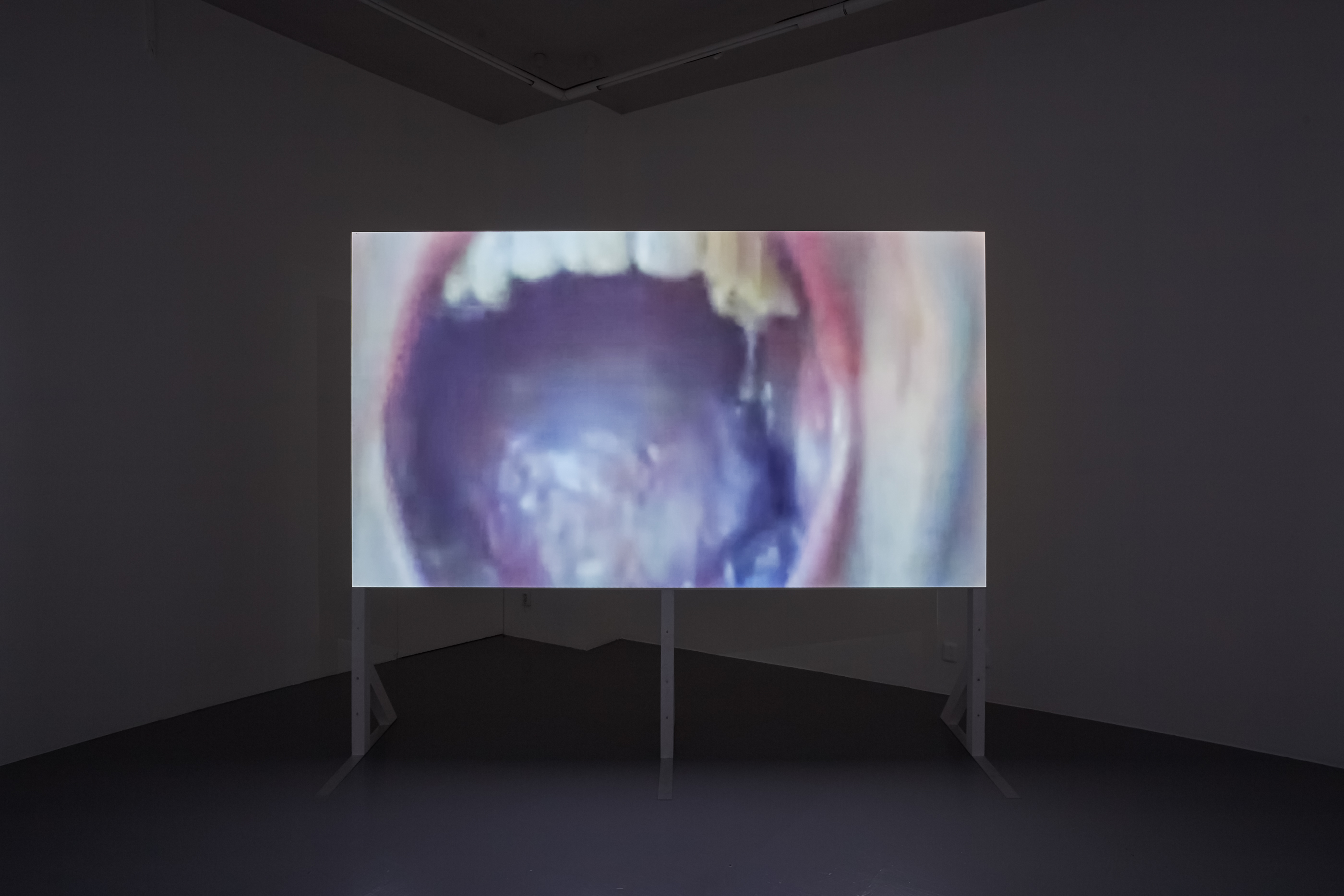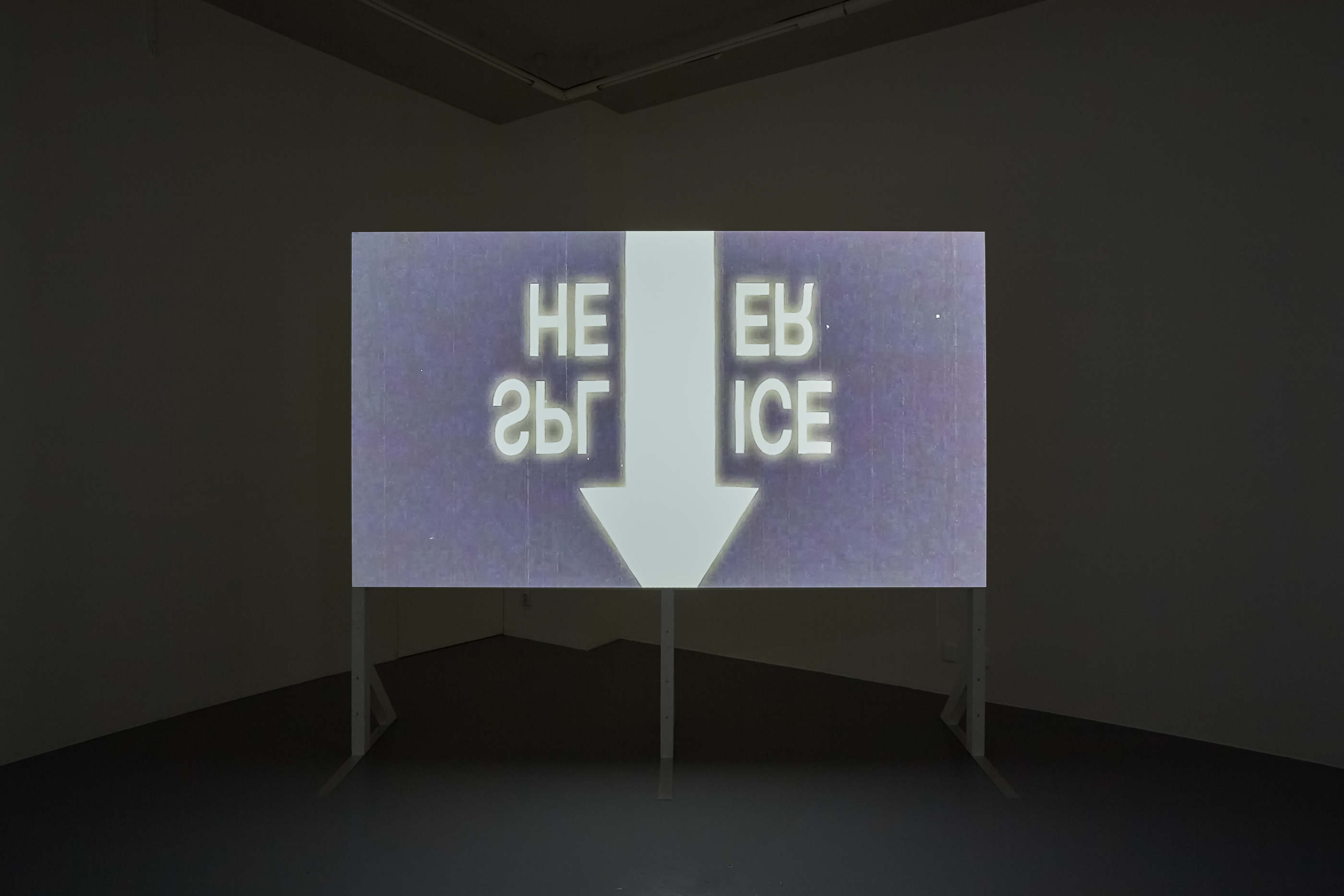Distant Hum
Curated by Pavel Kubesa
At Galerie NoD, Prague
June 17 — July 16, 2021
The exhausted hears a distant hum.
Exhausted is a whole lot more than tired. The tired has only exhausted realization, while the exhausted exhausts all of the possible. The tired can no longer realize, but the exhausted can no longer possibilitate.[1]
The body crumbles as it reaches a point beyond tiredness. It has been enveloped in a distressed world as have come to know it, shaped with the claws of the capitalist machinery. As body gives out, it is not the only one – the world itself comes to its limits of reproducing the same practices of extraction and alienation, of an unhinged expansion towards all that is lived and built. The whole of a certain reality that the body has been subsumed to, becomes futile in sustaining itself. Strings of the real are less and less definitive: reality starts dissipating along its own interstices. It has exhausted its possibilities – on the brink of it is a becoming fiction.
A threshold – a space of balancing between the virtual and the actual, a culmination of doubt having made a gesture forward but not yet passed – has become the mode of being in the always-continuous present. A limit of exhaustion, something between a final defeat and an opening into the realm of new possibilities. In this threshold, we meet Choma’s human. A traveller stuck in temporality of not his own devising. His body so exhausted, his very humanness has come into question. His joints morphing into tools able to explore leaks in the exhausted machinery, to open up wounds in the reality collapsing onto itself.
In the exhibition as well as in his larger body of work, Choma nests different scales: bodily, temporal, sensorial. Putting close attention towards what appears at the juxtaposition of their brims. Entering this interscalar space, you become part of this multiplicity extended towards the objects as well. They confront you in their forms not yet burnt into daily memory, their proportions lightly skewed. Imprinted into them, a sensorial netting emits light and sound covering a maze of double-takes. A slim moment of recognition slipping away as swiftly as it appears. A line of smoke screens. Framework of obstacles. Contaminated markings.
Dizzying view erases the paths taken, only the memorabilia of never-coming future flickers through.
you don’t remember any of this?
how are memories made in the threshold?
when do the machines become tired, too?
how come wounds heal faster in a metallic mouth?
can you still hear the distant hum?
[1] Gilles Deleuze and Anthony Uhlmann, The Exhausted, 1995.
— Vaida Stepanovaite
![]()
![]()
![]()
![]()
![]()
![]()
![]()
![]()
![]()
![]()
![]()
![]()
![]()
![]()
![]()
![]()
![]()
![]()
![]()
![]()
![]()
![]()
![]()

